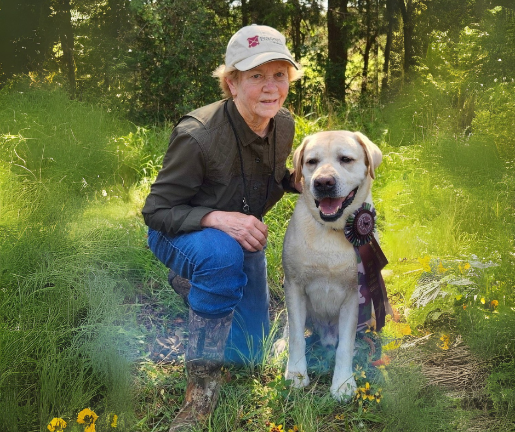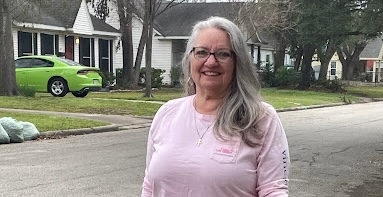Paula Graves suffered a mild stroke fall that required a follow-up surgery for a possible blockage in her carotid artery. As she was being prepped for the operation, her heart began beating irregularly, a condition known as atrial fibrillation (AFib), which can lead to blood clots, stroke or other complications. The medical team at Baylor St. Luke’s Medical Center in Houston aborted the surgery and ended up shocking her heart back into a normal rhythm.
The 72-year-old retired chemical engineer from Brazosport was still in the surgical ICU when she began talking funny.
“Everybody who heard my voice turned around, and my whole face had just drooped,” Graves said. “All of a sudden, I looked at my left hand, and I couldn't feel my left hand. I couldn't move my left hand.”
The nurse quickly called a stroke alert, and Graves was rushed to the operating room for brain scans and, ultimately, an intervention to remove the clot that was blocking blood flow to about a quarter of the right side of her brain.
“We knew that if we didn’t act immediately, her presentation was going to get much, much worse, and she wouldn't have a good recovery from that,” said Dr. Omar Tanweer, director of cerebral vascular neurosurgery at Baylor College of Medicine.
The location of the clot was in a critical part of the brain that was “extremely important for movement of the left side of her body and face and some speech,” he said.
Tanweer performed a mechanical thrombectomy, a minimally invasive procedure that removes blood clots from arteries and veins. It entailed a small incision in Graves’ leg and a catheter inserted into the artery that guided a device into the blocked artery in the brain to grab the clot and pull it out.
The procedure went “super smooth,” and Tanweer was able to get to and remove the blockage within seven minutes, he said.
With blood flow restored, the part that was affected “usually wakes up and does really well over the next 12 to 24 hours,” he said.
“In her case, we started seeing significant improvement almost immediately, which was a great sign,” Tanweer said.
When Graves woke up, she could speak clearly and move her fingers.
“Everything was good, and it was just, it was like a miracle,” she said. “We were right here in the right place with the right people at the right time.”
She remained in the hospital the rest of that week in November as doctors adjusted her medications to control her high blood pressure, AFib and heart rate. She will be visiting an electrophysiologist about possibly undergoing an ablation to try to fix the electrical pathway in her heart that is causing her irregular heartbeats.
Tanweer said he is proud of the work that St. Luke’s does for stroke patients.
“Time is brain in a stroke. Every minute you’re losing 1.9 million neurons,” he said.
“The American Heart Association has given us the highest award for the team that can take someone from the moment they enter the door to opening up the vessel. That actually is a metric that the AHA keeps track of, so we have the fastest times for that metric. So having a stroke team available, having it efficient, so they can quickly take someone from the ambulance right into the hospital to open up the vessel immediately, is the best thing we can really do for patients.”
Graves agrees.
“It will make all the difference,” she said. “I’m a believer.”




